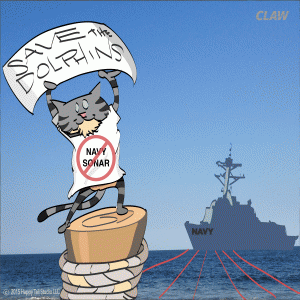The Lion, the Inch, and the War Trove
August 12 is World Elephant Day, and a perfect time to consider the intersection of human-wildlife interactions. Current estimates indicate that four elephants die an hour at the hands of poachers. Even with the recent effort in the U.S. (finally) to end the commercial ivory trade, recent news delivers a mixed bag for wildlife.
The lion
In early August, Zimbabwe announced a trophy-hunting ban sparked by international outrage over Cecil the Lion’s death. Cecil was reportedly lured outside the park’s protected zone by a tour guide, then shot and killed with a bow and arrow by a 55 year old American tourist who paid more than $50,000 for the experience. The ban was lifted this week, amidst activist calls for improved enforcement of policy around trophy hunting.
Though nothing can be done for Cecil, there has been a significant aftermath. It’s worth noting the differences between trophy hunting (which requires permits) and poaching (which is illegal). Legal trophy hunting may regulate various aspects of the hunt according to international agreements. The act in question with Cecil involved luring him out of the safe zone of Hwange National Park, which would constitute poaching.
The incident also sparked questions about culpable corporate policies that may inadvertently support illegal poaching. As a result, a group of airlines announced bans and restated policy regarding the transport of big game trophies worldwide. Delta, American Airlines, United and other airlines reiterated or clarified positions. Delta issued a strong statement, “Effective immediately, Delta will officially ban shipment of all lion, leopard, elephant, rhinoceros and buffalo trophies worldwide as freight.”
The Inch
During the Gold Rush era the miner’s inch described the flow of water. That era has left its mark on U.S. landscapes, and this week that included serious environmental fallout. Reports describe an environmental emergency for local communities as at least a million gallons of tainted water leaked into the Animas River from an inactive Colorado mine. The contaminated sludge has traveled 100 miles so far, now stretching to the San Juan River in New Mexico. The disaster is wreaking havoc on waterways,endangering water used by local communities as well as harming habitats for fish and wildlife.
A response from the National Wildlife Federation reminds that similar disasters could be avoided with improved efforts to clean up old mines before tragedies like this take place, because this mine
“is just one of thousands of historic hard-rock mines across the West that weren’t adequately cleaned up and have polluted waterways that provide drinking water, irrigate crops, sustain fish, wildlife and a multi-billion-dollar outdoor recreation economy.” ~Judith Kohler, Communications Manager, National Wildlife Federation
The War Trove
The U.S. Navy has acknowledged the risk and potential harm to whales, dolphins, and marine and mammal life associated with active sonar testing and training. Off the coasts of Hawaii, Southern California, the Atlantic Coast, and the Gulf of Mexico, documented harms have been linked to naval sonar testing and training. Data suggests that since as early as 1989, sonar tests have been linked to injuries, strandings, and deaths. The reports identify that the level of impact ranges from temporary to permanent hearing loss, to behavioral changes that may pose risks. Global investigations of such incidents continue, underscoring the potential harm to dolphins and other marine life precisely because they depend on a complex sensitivity to sound in order to navigate their world.
Despite the acknowledged risks, the U.S. Navy proposed a plan with a significant increase in its sonar testing and training, anticipating nearly 10 million possible instances of harm. So far, one court case ruled that the plan would violate wildlife protection laws. Many of the animals and marine life in these regions are supposed to be protected species, and multi-agency collaborations have been working to coordinate response. Though possible solutions vary, most environmental groups agree that there are ways to minimize the harms associated with “lethal sounds.”
What you can do on these issues
- Act for elephants to help end poaching
- Ensure new mines keep habitats safe
- Save endangered whales and wildlife from sonar testing
“You are not Atlas carrying the world on your shoulder. It is good to remember that the planet is carrying you.” ~Vandana Shiva, Ph.D., biodiversity researcher and founder of Navdanya


